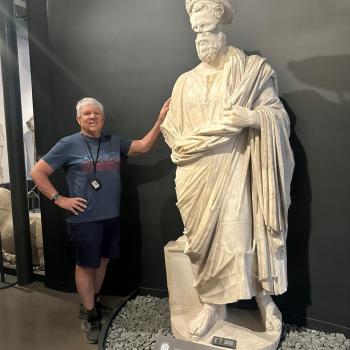Here’s a helpful post from Larry Hurtado….
by larryhurtado
Reading a book for review recently on another topic altogether, I came across a casually proffered claim that is frequently asserted/assumed but flatly incorrect: That a major reason early Christians initially turned to the codex as their preferred book-form was that the codex could accommodate a larger body of text than a roll. Wrong on all counts.
First, let’s be clear about chronology. Sure, by the fourth century CE Christians had developed codex-technology such that they could build a codex able to contain the entirety of Christian scriptures (OT & NT) in one book, Codex Sinaiticus being a prime example. (Nevertheless, even then and for centuries thereafter, this sort of “pan-dex” was highly unusual.) But the early Christian preference for the codex is apparent already in our very earliest manuscript artefacts, some of which take us back to the second century CE (and these extant artefacts are not likely the first Christian codices, so the preference must extend earlier still). We have to consider these early codices, therefore, and what they were capable of containing.
And the evidence indicates that the typical earliest Christian codex was a single-text book: e.g., a codex containing solely a given Gospel. (All you have to do is look at the extant papyri manuscripts and what they originally contained.) So, contrary to some claims the codex wasn’t initially adopted to accommodate the four canonical Gospels in one book. And the codex didn’t enable these four Gospels to acquire scriptural status either. They acquired this status first, and then Christians worked to figure out how to construct codices that could accommodate all of them.
Well into the third century CE, Christians were still experimenting with different ways to construct codices to serve their more ambitious aims, which included the desire to include multiple texts in one book. The Chester Beatty biblical papyri show this. So, again, preference for the codex came first, and then across succeeding decades, Christians worked at means of building codices capable of serving their distinctive interests.
Finally, the bookroll as well was quite capable of containing a large text or multiple texts. Consider, e.g., the famous St. Mark’s Isaiah scroll from Qumran: ca. 45 feet length. Jews as well as Christians, after all, had a developing body of scriptures to copy and transmit, cite and consult, and by all indications continued to prefer the bookroll for their scriptures for several centuries after early Christians had gone for the codex.
For lots of data and further discussion, see my book: The Earliest Christian Artifacts: Manuscripts and Christian Origins (Eerdmans, 2005).














